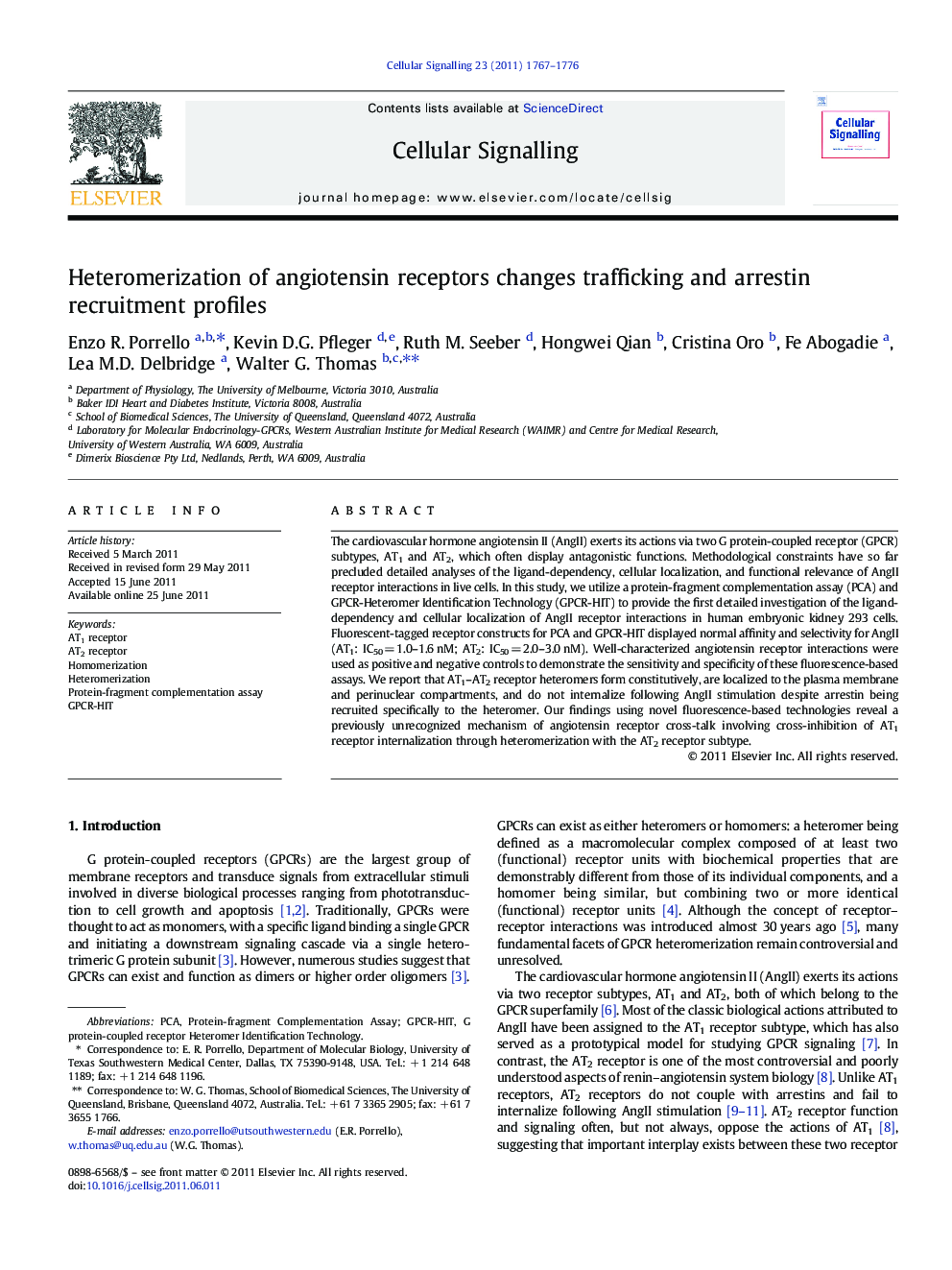| Article ID | Journal | Published Year | Pages | File Type |
|---|---|---|---|---|
| 1963643 | Cellular Signalling | 2011 | 10 Pages |
The cardiovascular hormone angiotensin II (AngII) exerts its actions via two G protein-coupled receptor (GPCR) subtypes, AT1 and AT2, which often display antagonistic functions. Methodological constraints have so far precluded detailed analyses of the ligand-dependency, cellular localization, and functional relevance of AngII receptor interactions in live cells. In this study, we utilize a protein-fragment complementation assay (PCA) and GPCR-Heteromer Identification Technology (GPCR-HIT) to provide the first detailed investigation of the ligand-dependency and cellular localization of AngII receptor interactions in human embryonic kidney 293 cells. Fluorescent-tagged receptor constructs for PCA and GPCR-HIT displayed normal affinity and selectivity for AngII (AT1: IC50 = 1.0–1.6 nM; AT2: IC50 = 2.0–3.0 nM). Well-characterized angiotensin receptor interactions were used as positive and negative controls to demonstrate the sensitivity and specificity of these fluorescence-based assays. We report that AT1–AT2 receptor heteromers form constitutively, are localized to the plasma membrane and perinuclear compartments, and do not internalize following AngII stimulation despite arrestin being recruited specifically to the heteromer. Our findings using novel fluorescence-based technologies reveal a previously unrecognized mechanism of angiotensin receptor cross-talk involving cross-inhibition of AT1 receptor internalization through heteromerization with the AT2 receptor subtype.
► Novel fluorescence-based assays for studying angiotensin receptor interactions. ► AT1 and AT2 receptors form constitutive homo- and heteromers. ► AT2 receptor cross-inhibits AT1 receptor internalization. ► AT2 –AT1 heteromers do not co-internalize, despite b-Arrestin recruitment to dimer.
